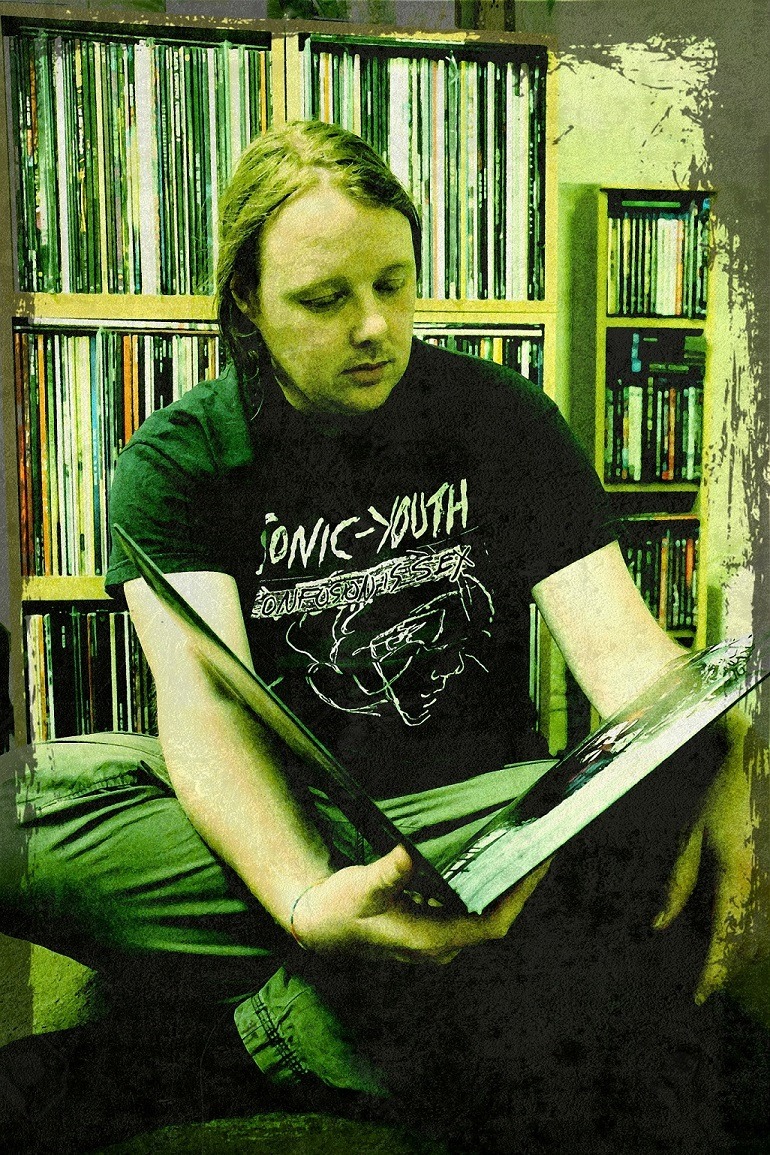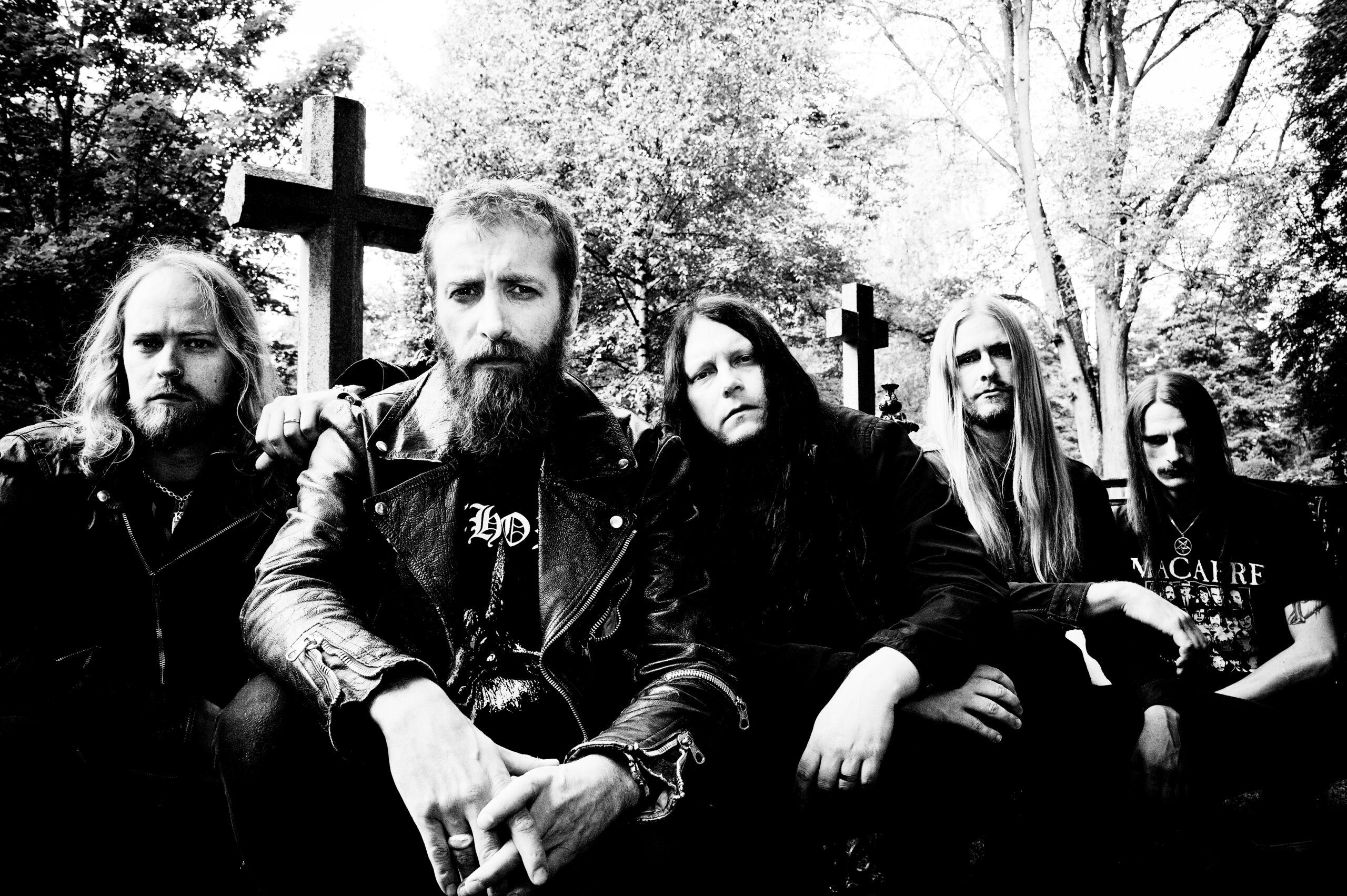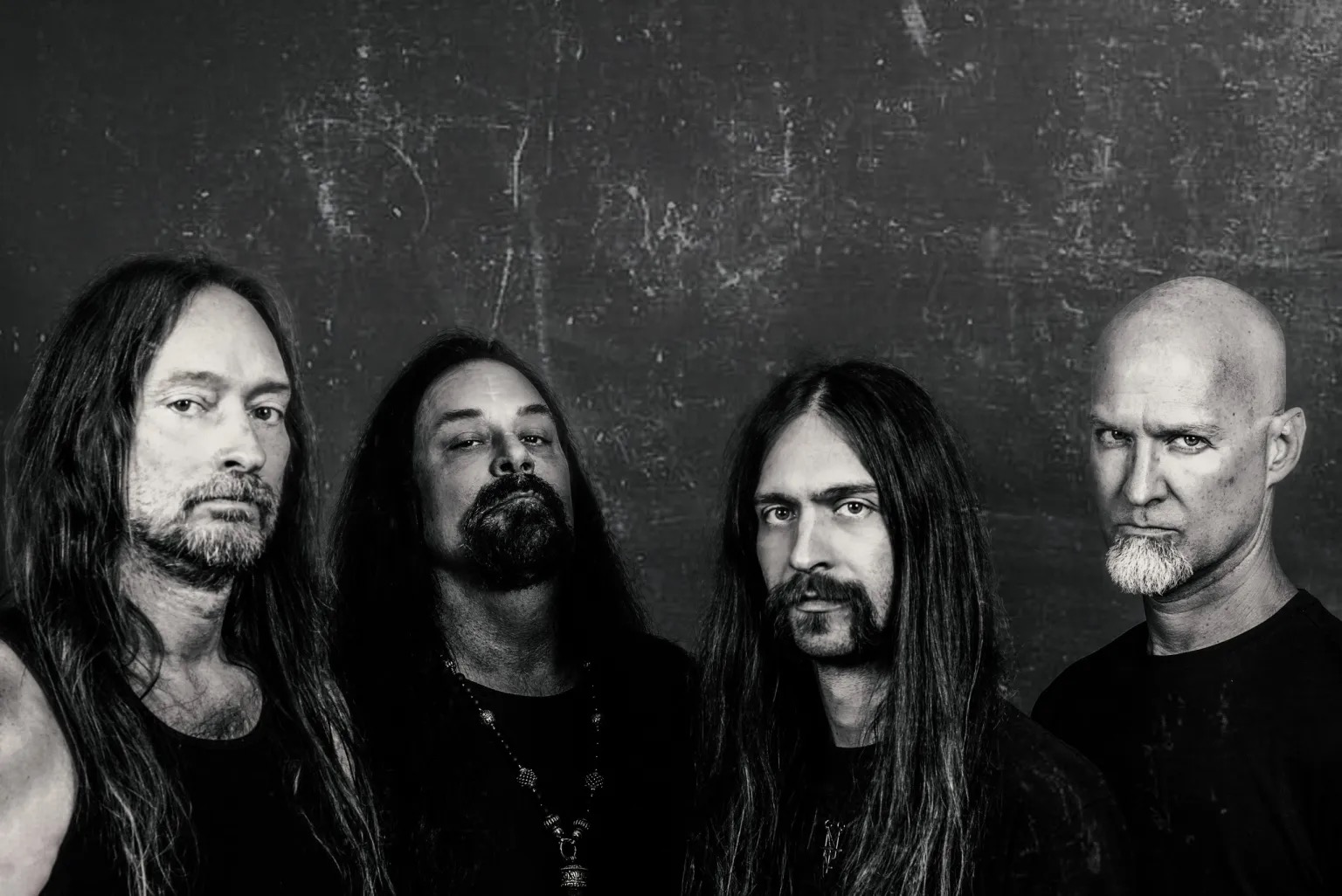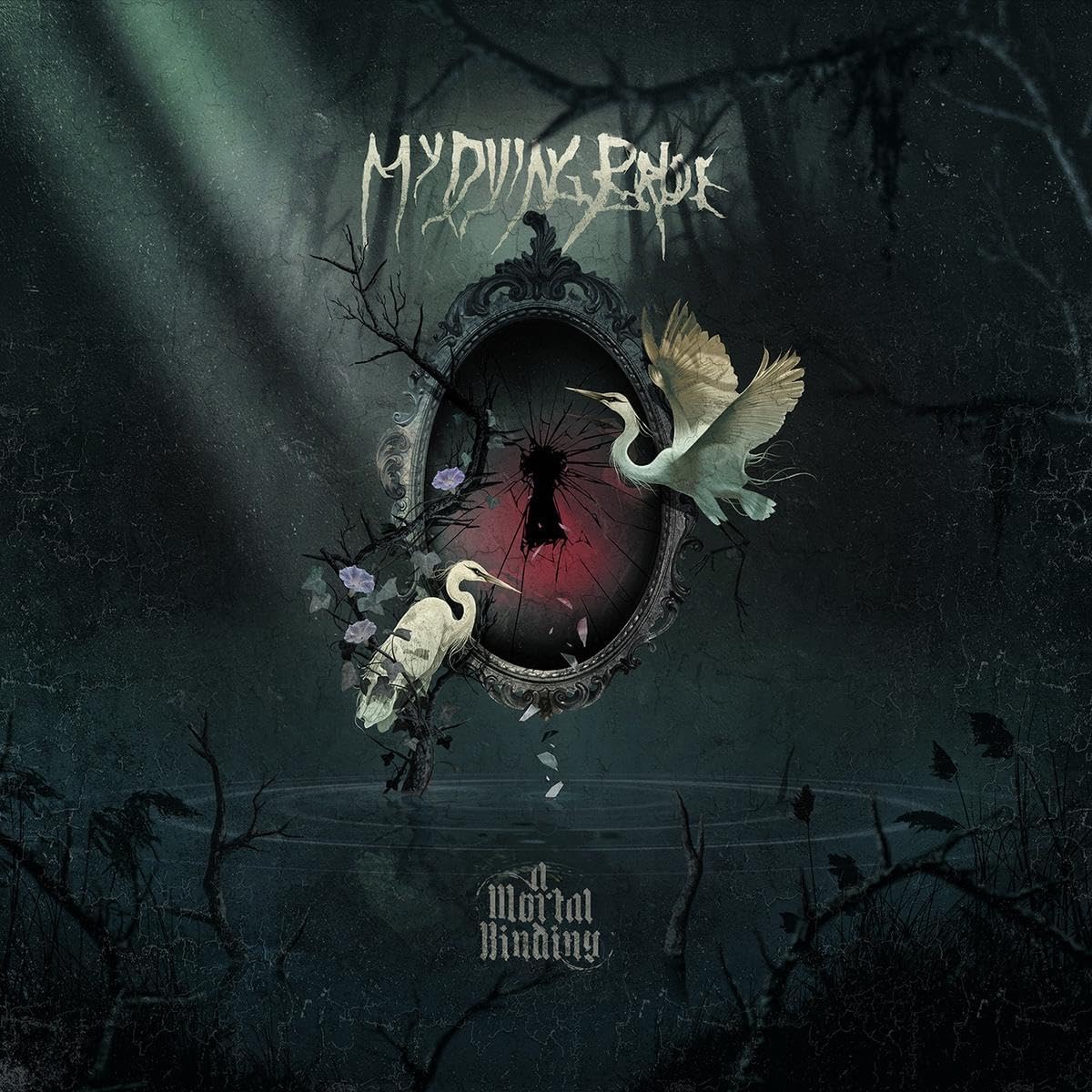A lot can change in six years. It was 2008 when Slipknot released ‘All hope is gone’, a varied album which offered vast promise but struggled to live up the malevolent experimentation of ‘Vol. III: The subliminal verses’.With band members taking a well-deserved break following the momentus shows that supported the album, little did anyone know that Slipknot was soon to be radically reconfigured by external forces outside the band’s control. The death of Paul Gray, a tragic affair that enveloped all of the members in a terrible and personal darkness, led to lengthy uncertainty as to whether the band was to continue at all, the members only reconvening after a great deal of soul searching. The shocks were not over, however, as in 2013 the band announced the departure of Joey Jordison, one of the band’s most high-profile members, with both sides of the split providing conflicting accounts of what had taken place. In this respect that the band continue at all is a testament to the strength of the remaining members’ personal convictions and utter dedication to the band.
Arriving in a veritable tsunami of expectation, ‘.5 The Gray chapter’ is possibly one of the most open tributes to a fallen comrade in metal. Where other bands might hide behind obfuscation and allegory, Corey Taylor, always an honest and intelligent commentator, pours his sense of loss and pain into the lyrics, whilst the band tear up the scenery around him. As a result the album is an unsettling, brutal and yet cathartic experience that arguably bridges the gap between ‘Vol. III’, with its highly imaginative experimentation, and the polished sheen of ‘all hope is gone’. Opening, as usual, with a scene setting track, the album kicks off with ‘XIX’, a dark, subtle piece of music that is light years removed from “74261000027”, the caustic opener that introduced the band’s debut. ‘XIX’ offers one of Taylor’s best ever vocal performances, a measured yet red raw delivery that simply bleeds pain over a slowly building backdrop that sounds more like Amebix’s last album than Slipknot’s usual brand of shock ‘n’ awe. It’s a powerful and poignant opening that segues beautifully into the moody ‘Sarcastrophe’, a track that opens amidst huge doomy chords only to suddenly explode into the sort of pyrotechnic assault that typified ‘Iowa’. It’s a powerful song, but the production is notably less cluttered than on ‘Iowa’ with the result that each separate element is rendered in unusual clarity, the pummelling percussion and brutal riffs all crystal clear despite the myriad elements bought into play by the band. ‘AOV’ settles into a brutal groove that owes as much to Sepultura as it does to the world of nu metal and once again the production allows each element to shine through. The clean vocals on the chorus, meanwhile, whilst possibly liable to divide some fans, are well done and handled, as always, with skill by Taylor whilst the song’s melodic denouement is both unexpected and innovative. Familiar to most Slipknot fans, ‘the devil in I’ opens with a deep, dark groove churning away in the bowels of the earth, offering a more familiar picture of Slipknot than ‘AOV’, only to turn everything on its head when the noise slips away and Corey delivers a pained, personal vocal performance over a beautifully restrained backing that shows just how varied Slipknot have become. Another departure, ‘Killpop’ opens on a dark, almost trip-hop shuffle, and even as the guitars slowly appear, it’s clear that Slipknot are experimenting with form in a way that ‘All hope is gone’ promised but rarely delivered. Still potent, the song builds to some brutal climaxes, but this is Slipknot operating as a creative force rather that a product endlessly repeating itself, and it sounds, for the most part, electrifying. In contrast, ‘Skeptic’ is a stunningly violent track that harks all the way back to the band’s debut album with Corey spitting out the lyrics like a man possessed over a thunderous backdrop that offers no quarter. In fact, skeptic’ is topped in the brutality stakes only by ‘Lech’ with its opening roar of “I know why Judas wept, motherfucker’.
The album almost stops for ‘Goodbye’ an almost unbearably poignant reminder of why we’re gathered here. A beautifully judged tribute and treatise on how the younger generation deals with the death of a loved one, ‘goodbye’ is as close to the bone as any band has ever got and a perfect demonstration of how much Slipknot still need to share their collective pain with their many fans. Kicking the album back up several notches, ‘Nomadic’ is a fast and frenetic, coupling a huge melodic chorus with a verse so laden with spite and venom that it all but melts the speaker cones. Possibly one of the most pop things Slipknot have ever done, ‘The one that kills the least’ sees the band exploring rippling guitars, rumbling bass and a pounding beat only for the whole thing to slip sideways into full on old-school slipknot just as you’ve adjusted to the change. It’s a jarring, disconcerting piece and, with its well-judged solos, another example of the maturity that Slipknot display on this powerful record. ‘Custer’ sends things spiralling into a hypnotically brutal Slipknot pit with DJ Sid Wilson’s wild turntable work ringing out loud and clear over scarifying riffs only for the verse to strip off all the instrumentation, leaving Corey’s malicious drawl as the only company to be found in the darkness. Once again favouring variety over familiarity, ‘Be prepared for hell’ sounds like a cross between Tricky and Marilyn Manson only for ‘the negative one’ (another track that’s been doing the rounds for some time) to come storming out of the gates like a natural successor to ‘eyeless’ with its potent guitars and manic delivery. The album closes with ‘if rain is what you want’, a song that sounds closer to Depeche Mode than Slipknot and yet, with its grinding guitars on the chorus, maintains a powerful, downbeat atmosphere that is entirely in keeping with the record as a whole and a fitting conclusion to so varied a set.
All in all ‘.5: the Gray chapter’ is the record that Slipknot needed to make. Still coming to terms with the loss of a much loved member of the band, Slipknot did not simply regroup, they pushed themselves on almost every level to make an album that is bigger, better and stronger than anyone could have reasonably expected. The melodic aspects that most firmly appeared in ‘all hope is gone’ are still present, but here those flourishes are tempered by a creativity that has more in common with ‘vol. 3’ with the result that the album is varied, original and one of the most interesting releases Slipknot have yet attempted. It is possible that ‘.5: the Gray chapter’ will alienate those fans who struggle to see beyond the screaming, but as Slipknot have long proved they are better, more intelligent and more creative band than that. Here they push boundaries but never lose sight of either their dearly departed muse or what it is that has made Slipknot so special to hundreds of thousands of fans around the world. Still a creative force to be reckoned with, ‘.5: the Gray chapter’ is a particularly strong entry into the Slipknot canon and a highly recommended release.











Leave a Reply